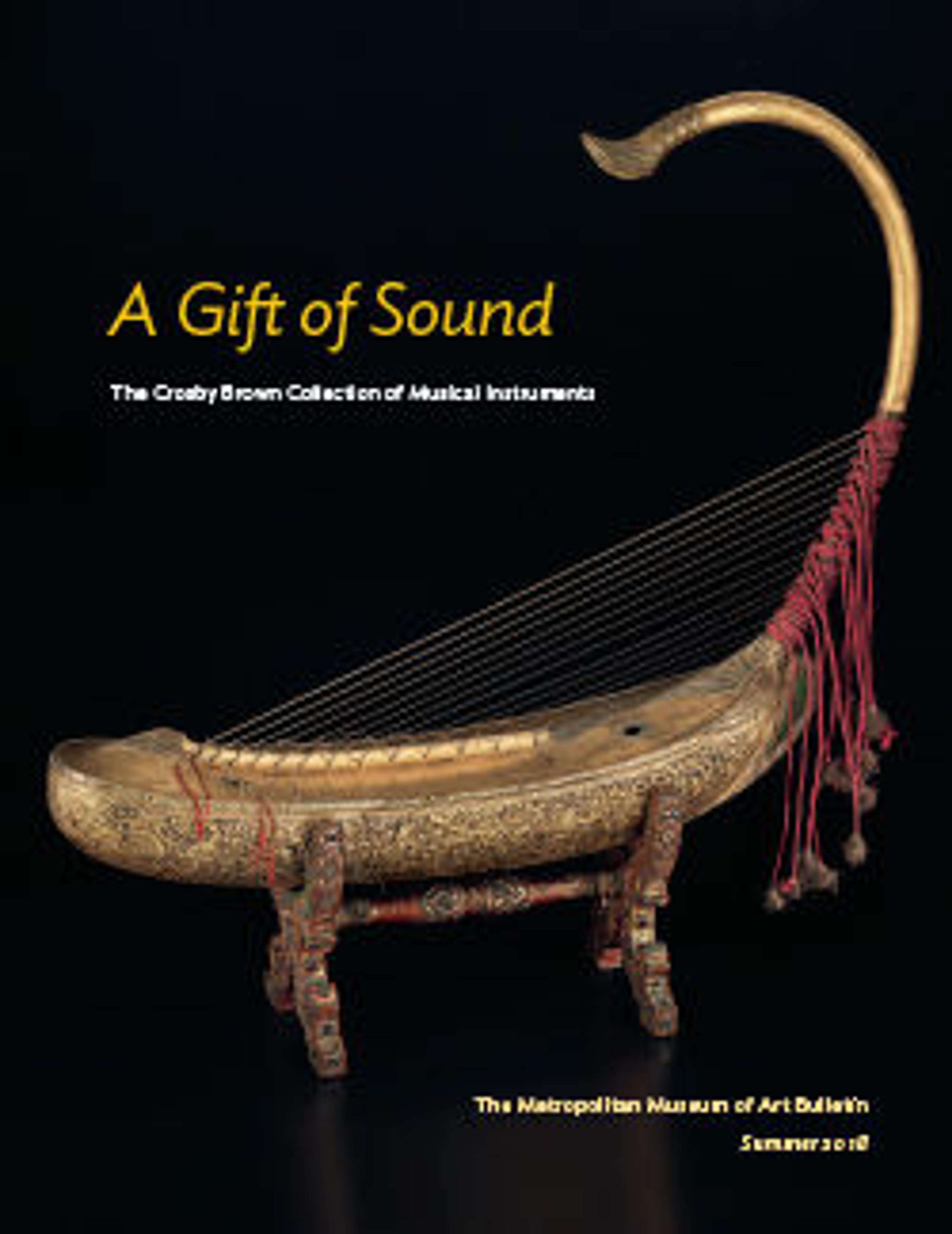Double Chromatic Harp
This harp has two sets of strings that cross near their midpoint. One row of strings has the naturals for a C major scale, like white notes on a modern piano, while the second set of strings has the accidentals, or black notes. The design built by Greenway is an exaggerated version of a cross-strung model built by the Pleyel & Wolff Company of Paris in the late nineteenth century, and a way to address increasingly chromatic music in the orchestral repertoire without adding pedals. The greenway harp, with its two columns standing quite far apart, is much more difficult to play and it was probably not made for orchestral repertoire (glissandi in any key but C would be impossible). Only two harps by Greenway, both with the cross stringing design, are known to survive. Very little is known about this builder, but it is believed that he is Henry Greenway who was located at 545 Atlantic Avenue in Brooklyn, a Civil War veteran and a piano repairer active in the last quarter of the nineteenth century.
Artwork Details
- Title: Double Chromatic Harp
- Maker: Henry Greenway (American (born England), Birmingham 1833–1903 St. Louis, Missouri)
- Date: after 1895
- Geography: Brooklyn, New York, United States
- Culture: American
- Medium: Spruce, maple, metal, gilding, brass
- Dimensions: H.66 1/8 x W. 18 7/8 in. (168 x 48 cm)
- Classification: Chordophone-Harp
- Credit Line: The Crosby Brown Collection of Musical Instruments, 1889
- Object Number: 89.4.1235
- Curatorial Department: Musical Instruments
More Artwork
Research Resources
The Met provides unparalleled resources for research and welcomes an international community of students and scholars. The Met's Open Access API is where creators and researchers can connect to the The Met collection. Open Access data and public domain images are available for unrestricted commercial and noncommercial use without permission or fee.
To request images under copyright and other restrictions, please use this Image Request form.
Feedback
We continue to research and examine historical and cultural context for objects in The Met collection. If you have comments or questions about this object record, please complete and submit this form. The Museum looks forward to receiving your comments.
